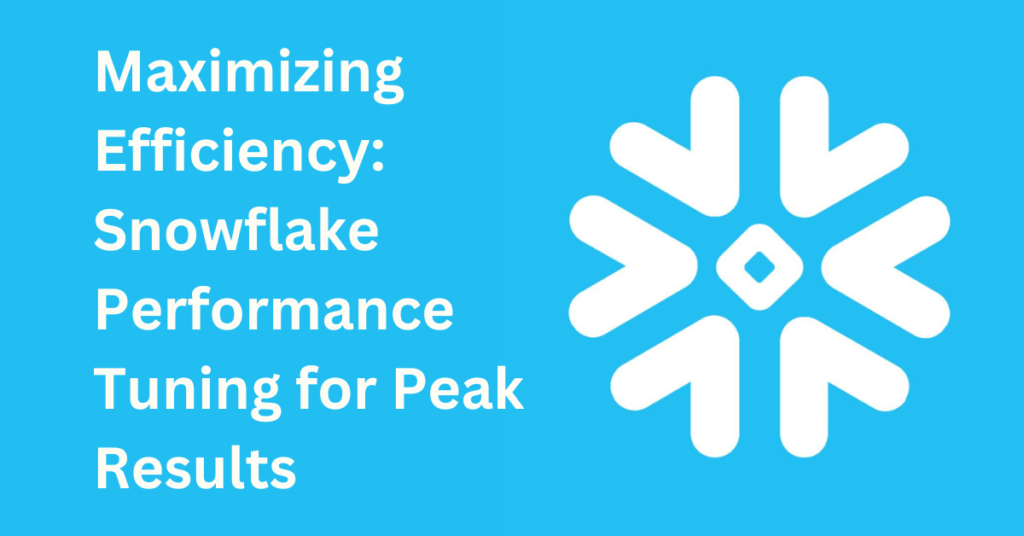Enter the dynamic sphere of data warehousing, and one cannot overlook the significant role played by Snowflake. It offers an innovative, scalable solution that eliminates most traditional constraints. To tap into its full potential, Snowflake performance tuning is paramount. This process invigorates system capability, allowing the delivery of insightful analytics at blistering speeds.
Table of Contents
Understanding Snowflake and Its Performance
Snowflake’s architecture operates on a divide-and-conquer model. It segregates storage and computing tasks, ensuring each unit’s separate and dedicated function. This segregation aids in delivering faster queries and superior system performance. However, like all systems, it also requires regular fine-tuning to ensure optimal performance.
Strategies for Effective Performance Tuning
Optimal Resource Allocation
Ensuring optimal use of resources can drastically improve performance. Multiple queries can be processed concurrently with the ‘multi-cluster warehouse’ option. This prevents potential bottlenecks, guaranteeing smoother and faster processing.
Adequate Data Clustering
By logically arranging related data in close proximity, data clustering reduces the need for large scans when running queries. It directly contributes to reduced computational time and costs. Hence, regular maintenance of data clusters can substantially enhance overall performance.
Prudent Use of Caching
Snowflake’s result cache saves the results of every query for 24 hours. If an identical query is issued, Snowflake retrieves the result from this cache, bypassing computing resources. Hence, understanding and leveraging this feature can lead to significant efficiency gains.
Beyond Basic Tuning: Advanced Optimization Techniques
Utilization of Materialized Views
Materialized views are stored query results, a ‘snapshot’ of data at a given time. Using materialized views reduces the need to compute complex queries repeatedly, thereby saving computational resources and boosting performance.
Query Performance Insights
Understanding the components of query execution is crucial. Using Snowflake’s ‘QUERY_HISTORY’ function can provide valuable insights into query performance. This information can help identify areas for improvement, leading to more targeted performance tuning.
Scaling and Resizing Considerations
Adjusting the size and scale of the warehouse based on the workload can lead to significant efficiency improvements. Small warehouses can handle simple tasks, while larger ones are suitable for complex, long-running queries.
Maintaining Updated Statistics
Snowflake automatically collects and maintains statistics on table data to optimize query performance. However, for large tables with frequent data modifications, the statistics may become outdated, leading to performance inefficiency. Hence, updating these statistics periodically can enhance query optimization and execution.
Cost-Based Optimization
Cost-Based Optimization (CBO) is a feature in Snowflake that uses collected statistics to select the most efficient method to execute a query. Ensuring this feature is well-utilized can significantly reduce query execution time, further boosting the overall performance of the Snowflake system.
Each strategy employed in Snowflake performance tuning carries its unique set of advantages. These combined efforts can produce an exceptionally efficient data warehouse capable of handling high data volumes with speed and precision.
Business Opportunities with Ink-jet or Electronic Printing
Glass Partitions for Healthcare Facilities
Conclusion: The Power of Regular Performance Tuning
Regular maintenance and Snowflake performance tuning is the key to reaping the full benefits of the platform. By utilizing effective strategies and advanced techniques, performance can be significantly enhanced. The ultimate goal is maintaining a streamlined, efficient data warehouse that delivers powerful, real-time insights.
Remember, the greatest strength of Snowflake is its adaptability. It’s designed to cater to evolving needs, with its flexible architecture offering many tuning and optimization possibilities. Harnessing these options can lead to a transformational shift in storing, analyzing, and utilizing data. Thus, maximizing efficiency and achieving peak results are no longer lofty goals but achievable targets in data warehousing.







